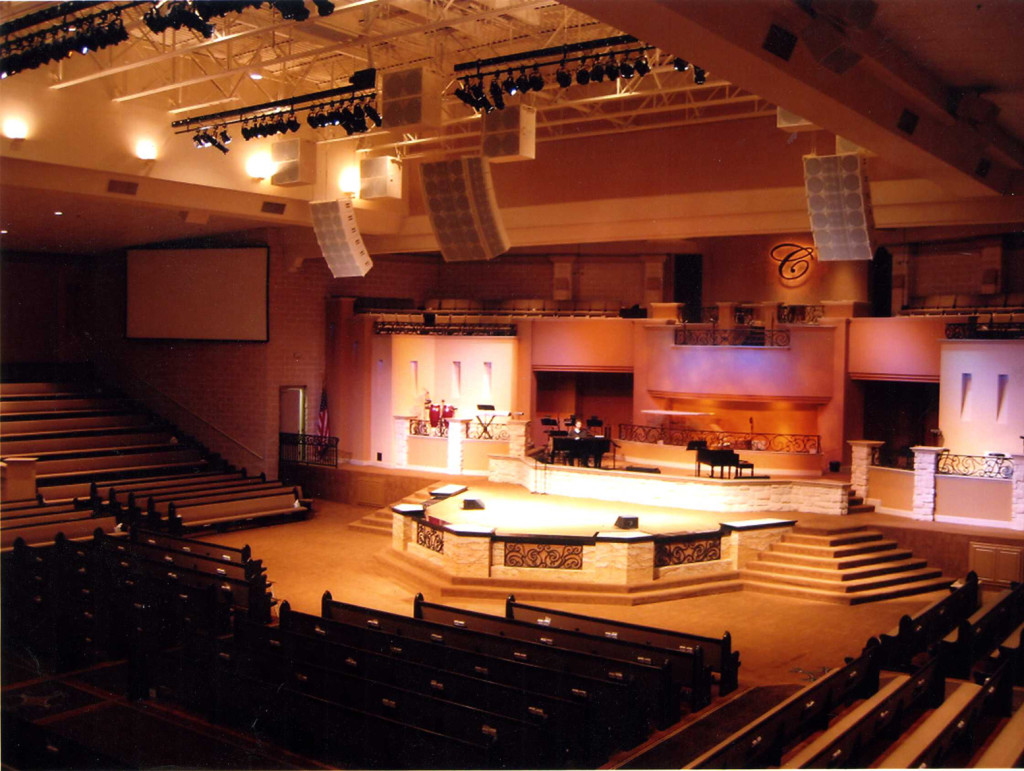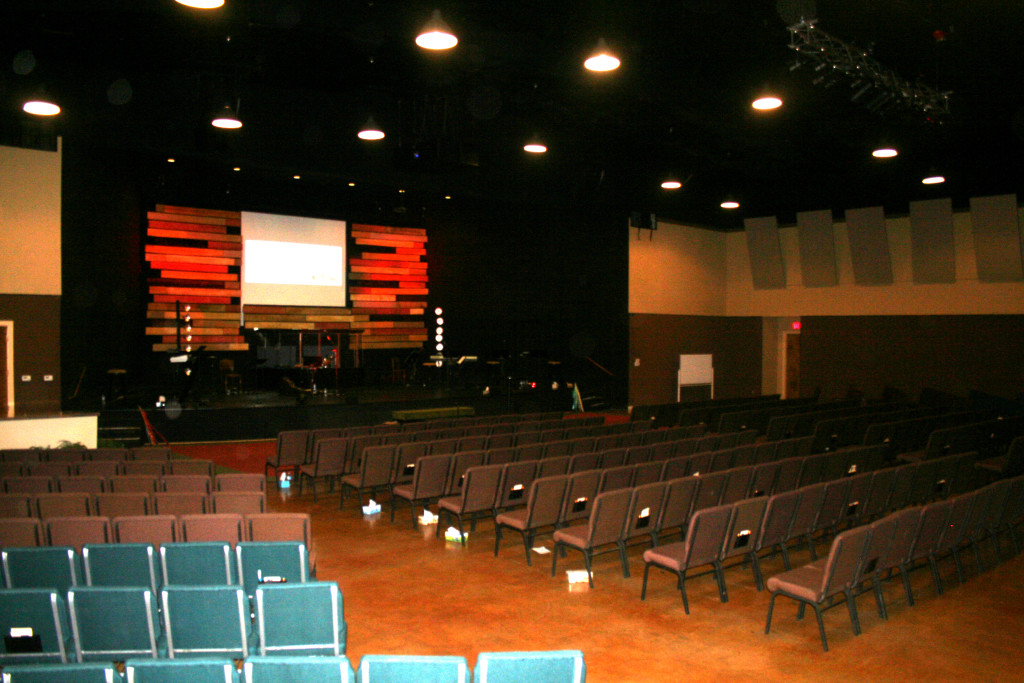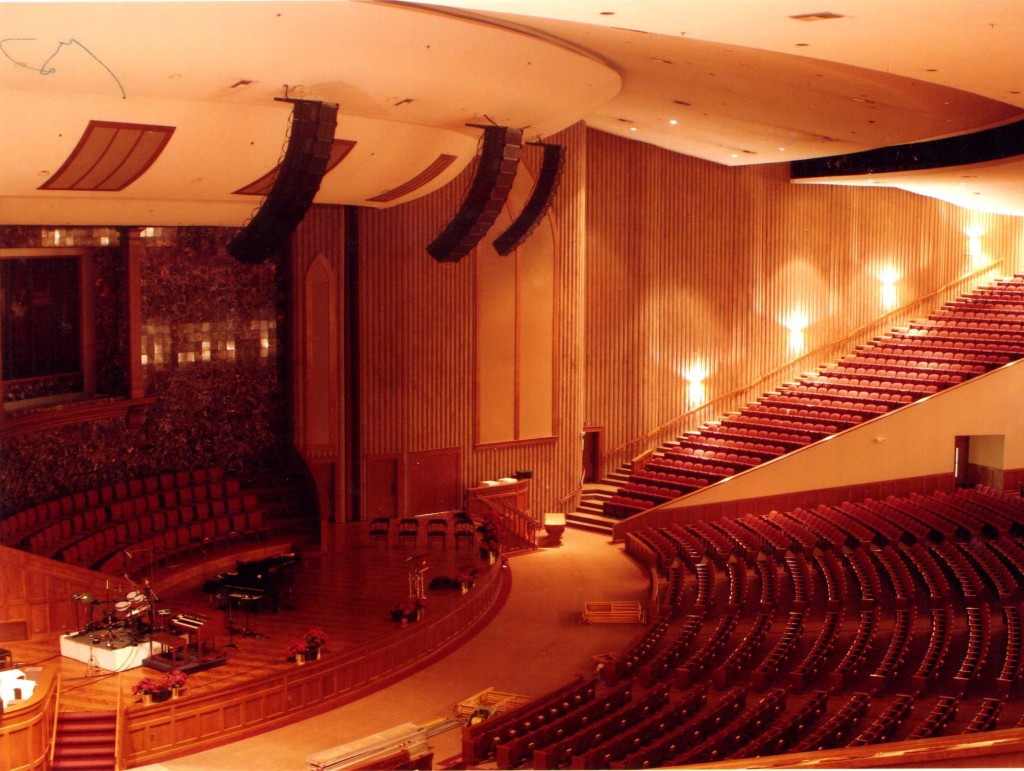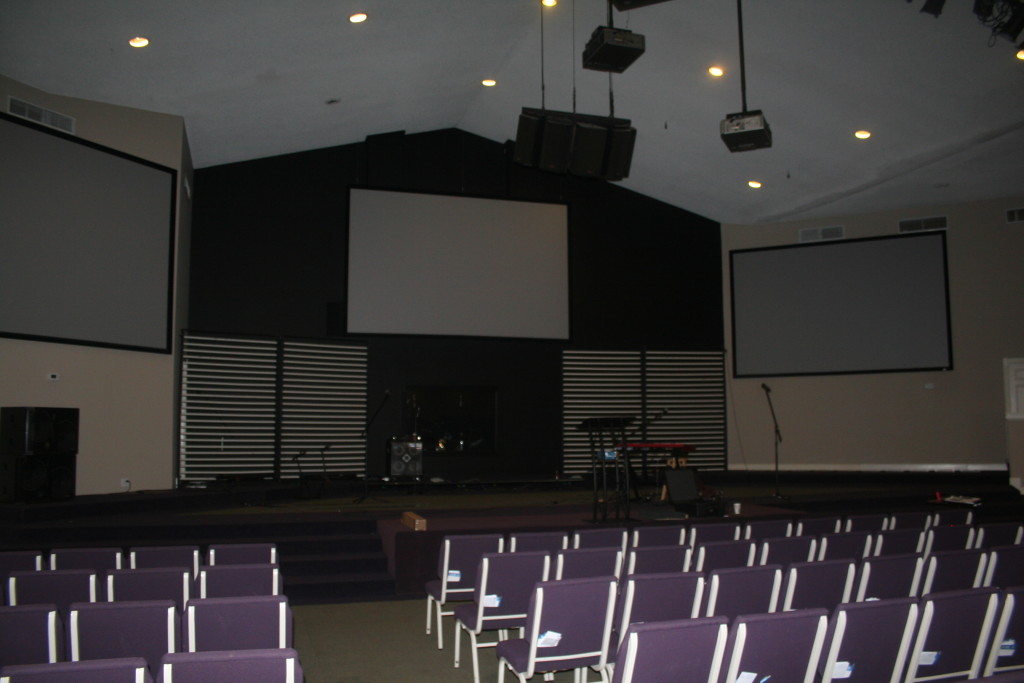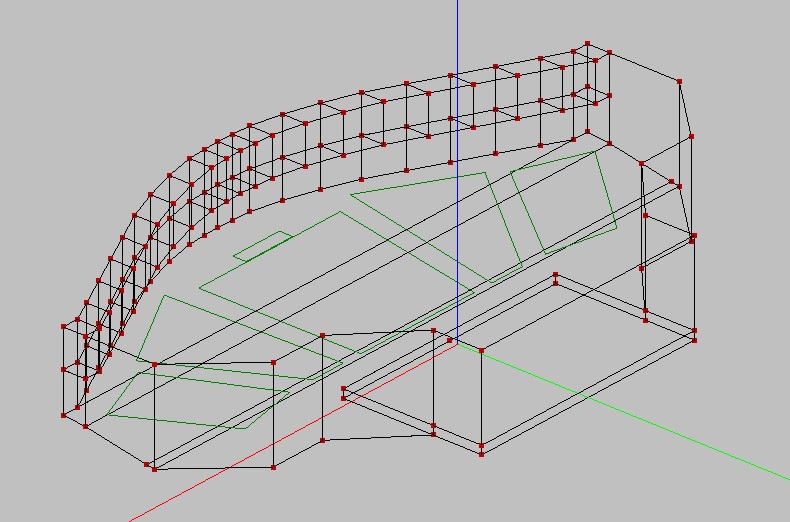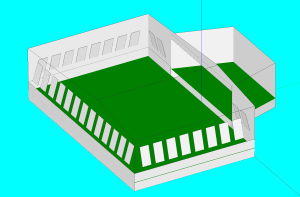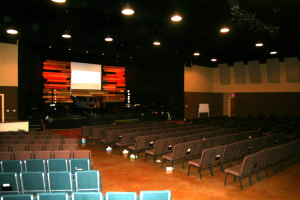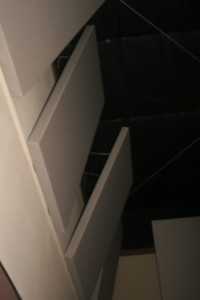Like so many small to medium sized churches in the US, Freedom Fellowship built a metal gymnasium to house their various daily activities. In the main room, a 90’x75′ outer dimensions was constructed a stage, support rooms on left and right of stage a small balcony to install the audio sound equipment and lighting, 16′ off the floor and audience listening height. For years the church struggled with inferior sound reinforcement and terrible acoustics created by the long reverb times and improper position for mixing (not in the line of sight of the speakers at all). A previous upgrade was made where a contractor installed a Yamaha LS9-32 with a set of 6 JBL VRX932LAP and two VRX 918 subs hung on each side of the stage starting at 25′ above the floor. Although with the ability to mix the FOH sound via an Apple IPAD assisted the engineer to hear the mix better than in the previous mix location, the position of the speakers along with the poor acoustics caused hot spots through out the room when the contemporary rock style music was being performed.
Plan of Attack:
In order to determine the physical acoustic properties of the room, a 3D EASE model was created and then analyzed with the AURA and EARS modules.
The results of the EASE data revealed that the room had a long average reverberation time of 2.8 seconds caused by the two largest parallel surfaces, the painted concrete floor and the metal ceiling with only 2″ of insulation. The pitch of the ceiling begins at 20′ and ends at the apex at 25′ twelve feet right of center of the stage. To correct this, 3″ of insulation was attached to the bottom of the purlins running from left to right which created a 5″ air gap between the first layer of insulation and second new layer, effectively creating a bass trap. This effectively controlled the 200-500 Hz build up in the room and reduced the average reverberation time to .72 seconds.
Because the room suffered from flutter echos and deterioration of the frequencies around 2.5kHz-5kHz, thirty 4’x8’x6″ Heimholtz resonators were installed on the left, back and right walls of the room and tilted at varying degrees to absorb certain frequencies while reflecting 3-4.5 kHz back into the room to enhance the intelligibility, especially when speaking.
The sound system was then upgraded with a BSS London Blu (4inx12 out) and two additional VRX918s and VRX932LAP were added to the existing boxes and then rehung in at 12 feet off center to left and right. The four VRX918s were hung center front of stage at 22” above the floor and occupying 1′ to 6′ in front of the stage and placed in a cardioid pattern (two firing forward and 2 firing reverse and delayed) by use of the BSS London. The BSS London also was programmed to provide an even dispersion of audio from the top box to the bottom 4th box to cover from the back of the room to the front row. Four JBL AC15 front fills were added on stage to provide supplemental support for the first three rows of seats.
Results:
After tuning was completed by EPA’s Associate Charles Grecco the room has a tremendous sweet coverage with less than 2dB difference from any seat in the room. “The quality is a night and day difference” says Media Director Jerry Bullock. He continues: “No longer are we having members coming front and asking for the sound to be turned down or turned up as every instrument is easily heard and reproduced through the sound system, it’s a joy to mix in this room now.”

